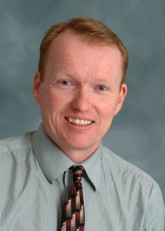Program Information
Utilizing Varian TrueBeam Developer Mode for the Quantification of Mechanical Limits and the Simulation of 4D Respiratory Motion
D Moseley*, M Dave , Princess Margaret Hospital, Toronto, ON
Presentations
SU-E-J-155 Sunday 3:00PM - 6:00PM Room: Exhibit HallPurpose:
Use Varian TrueBeam Developer mode to quantify the mechanical limits of the couch and to simulate 4D respiratory motion.
Methods:
An in-house MATLAB based GUI was created to make the BEAM XML files. The couch was moved in a triangular wave in the S/I direction with varying amplitudes (1mm, 5mm, 10mm, and 50mm) and periods (3s, 6s, and 9s). The periods were determined by specifying the speed. The theoretical positions were compared to the values recorded by the machine at 50 Hz. HD videos were taken for certain tests as external validation. 4D Respiratory motion was simulated by an A/P MV beam being delivered while the couch moved in an elliptical manner. The ellipse had a major axis of 2 cm (S/I) and a minor axis of 1 cm (A/P).
Results:
The path planned by the TrueBeam deviated from the theoretical triangular form as the speed increased. Deviations were noticed starting at a speed of 3.33 cm/s (50mm amplitude, 6s period). The greatest deviation occurred in the 50mm-3s sequence with a correlation value of -0.13 and a 27% time increase; the plan essentially became out of phase. Excluding these two, the plans had correlation values of 0.99. The elliptical sequence effectively simulated a respiratory pattern with a period of 6s. The period could be controlled by changing the speeds or the dose rate.
Conclusion:
The work first shows the quantification of the mechanical limits of the couch and the speeds at which the proposed plans begin to deviate. These limits must be kept in mind when programming other couch sequences. The methodology can be used to quantify the limits of other axes. Furthermore, the work shows the possibility of creating 4D respiratory simulations without using specialized phantoms or motion-platforms. This can be further developed to program patient-specific breathing patterns.
Contact Email:


